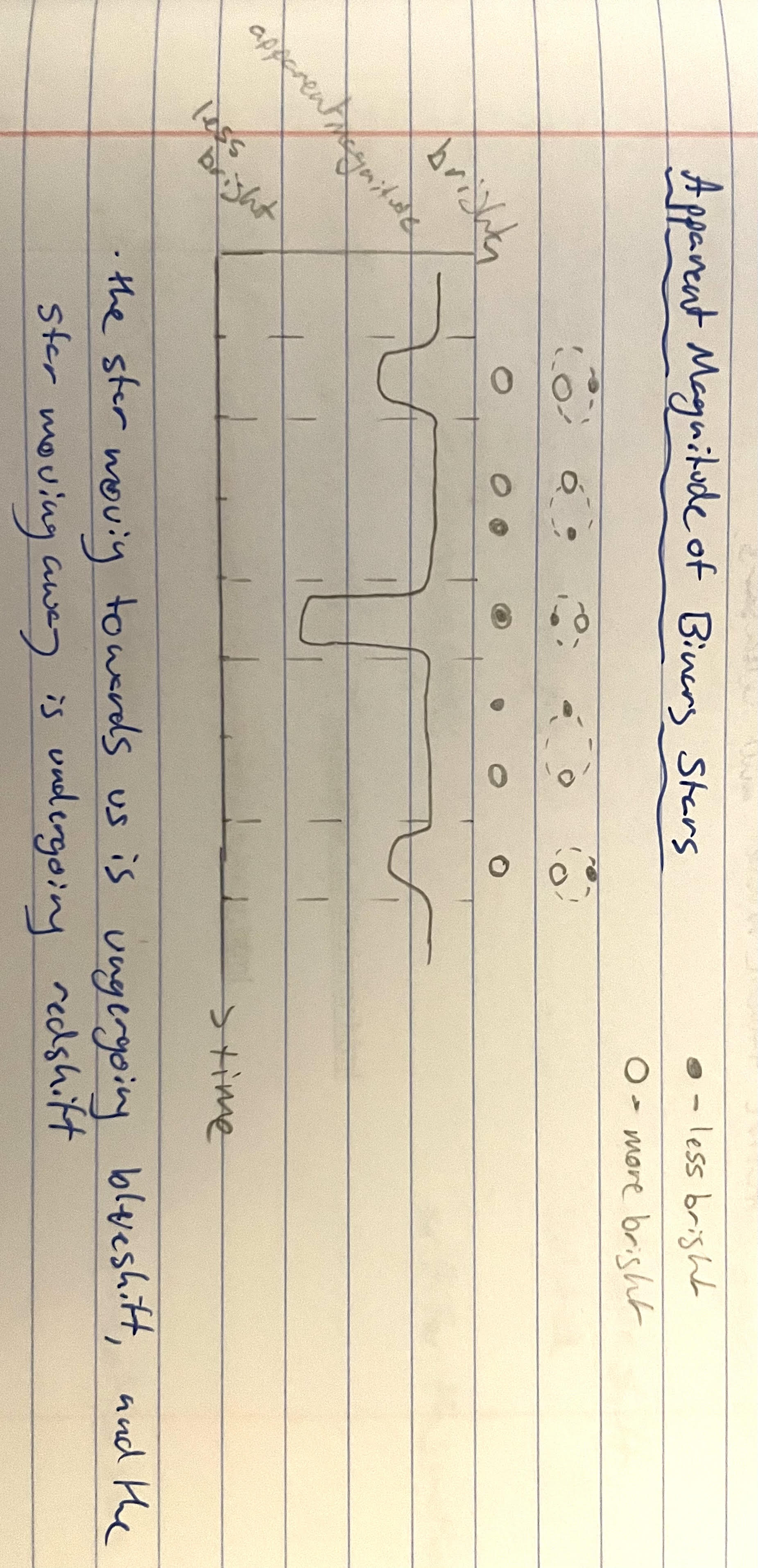Astrophysics 14 - Binary Stars, Quasars and Exoplanets
1/10
Earn XP
Description and Tags
Name | Mastery | Learn | Test | Matching | Spaced |
|---|
No study sessions yet.
11 Terms
How can absorption spectra be used to detect binary stars?
Binary stars orbiting in a similar plane to the earth will undergo red and blue shift depending on the phase of their orbit.
This can be detected using absorption spectra, appearing as one then two lines over time.
How can absorption spectra be used to determine the orbital period of binary stars?
We can measure the period of oscillations of the lines from binary stars - this is the same as their orbital period.
How can apparent magnitude be used to detect binary stars?
When one star is brighter than the other, and they orbit in the same plane as the earth, then one will eclipse the other. Depending on the phase of the orbit, the apparent brightness of the system will change.

What is a quasar?
A supermassive black hole surrounded by an accretion disc of dust and gas. Some have jets of matter and radiation emitting from the poles.
What are quasars also known as?
Active Galactic Nuclei
What does the enormous red shift of quasars show us?
That they are far away (the most distant objects seen).
Why are exoplanets hard to detect?
They’re orbitting stars which are much brighter than them, and they are much smaller than the stars they orbit so cannot be resolved.
Explain how exoplanets can be detected using the Doppler Shift.
An exoplanet orbitting a star has an effect on the star’s orbit, as they orbit a common centre of mass, so the star appears to wobble.
This wobble causes a small amount of red shift and blue shift, from which a minimum mass of the exoplanet can be observed.
Explain how exoplanets can be detected using the transit method.
When an exoplanet transits in front of its star, it blocks out some light, which can be detected.
The amount of dip in magnitude of the star is reflective of the exoplanet’s relative size compared to the star at that distance.
Give one limitation of both the dopler shift method.
The plane of orbit must be alligned with the earth.
Give three limitations of the transit method.
The orbital plane must be alligned with that of the earth, which is very unlikely.
The transit lasts for a tiny fraction of an orbital period, so are easy to miss.
The change in brightness is very low, so is hard to detect.